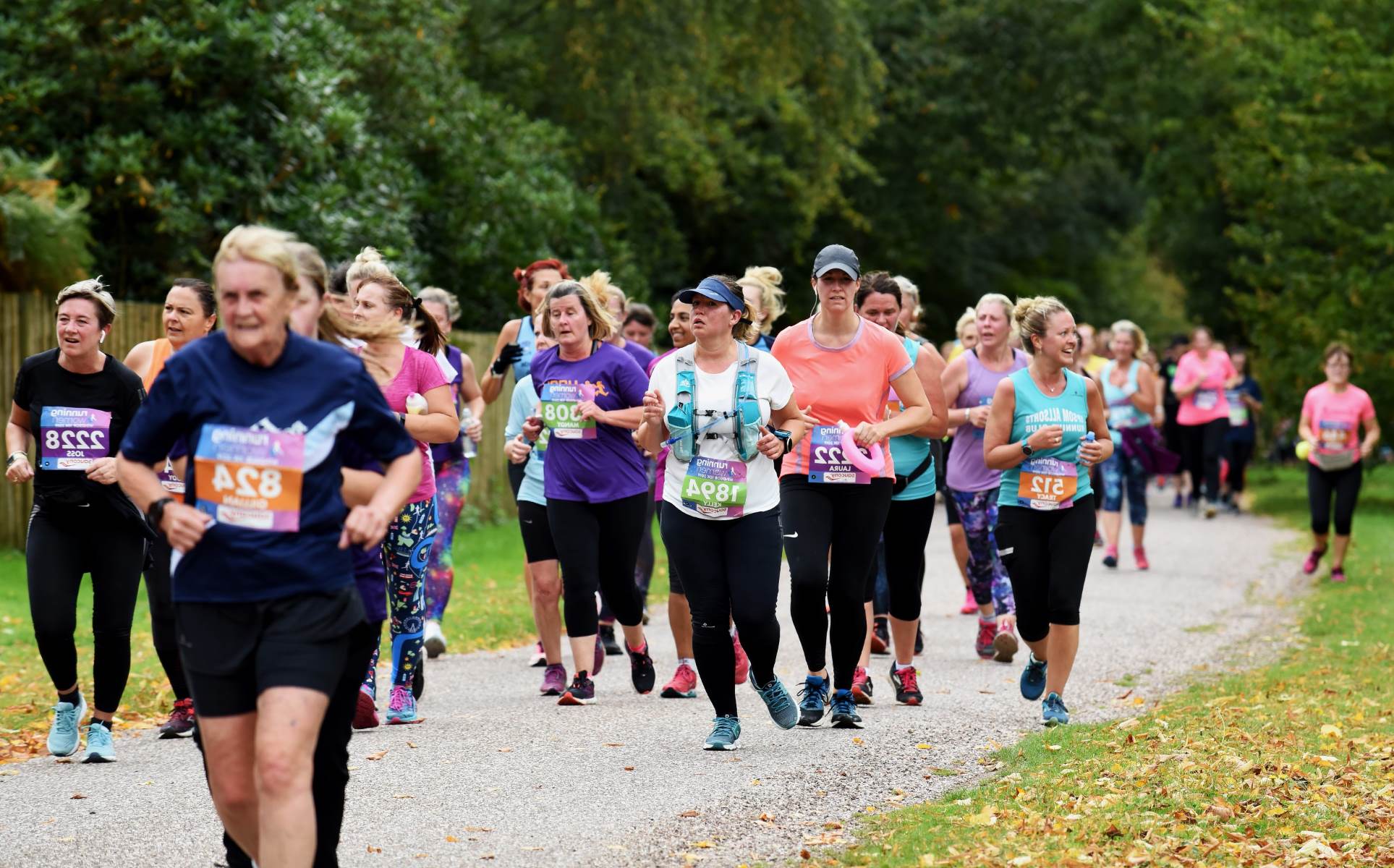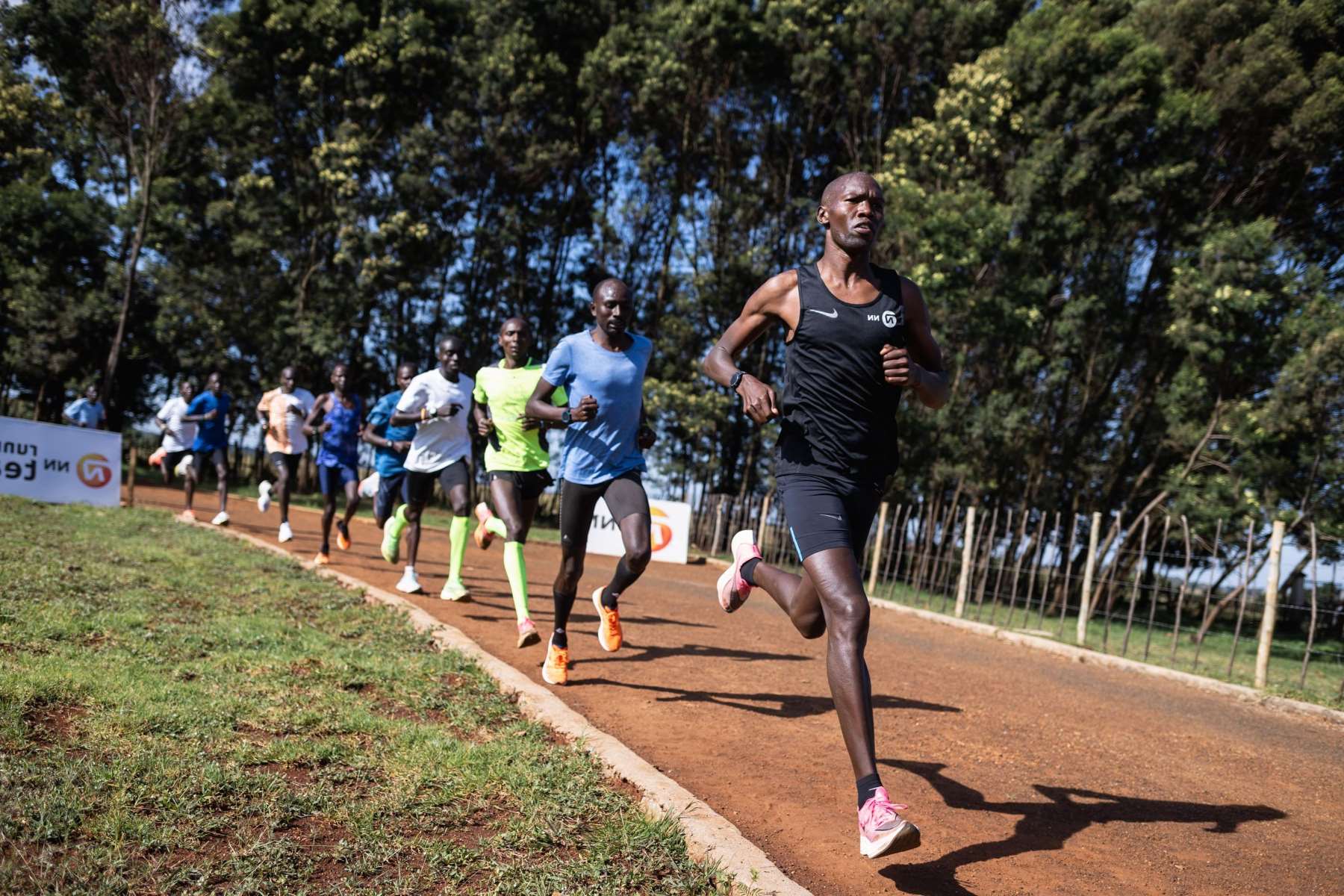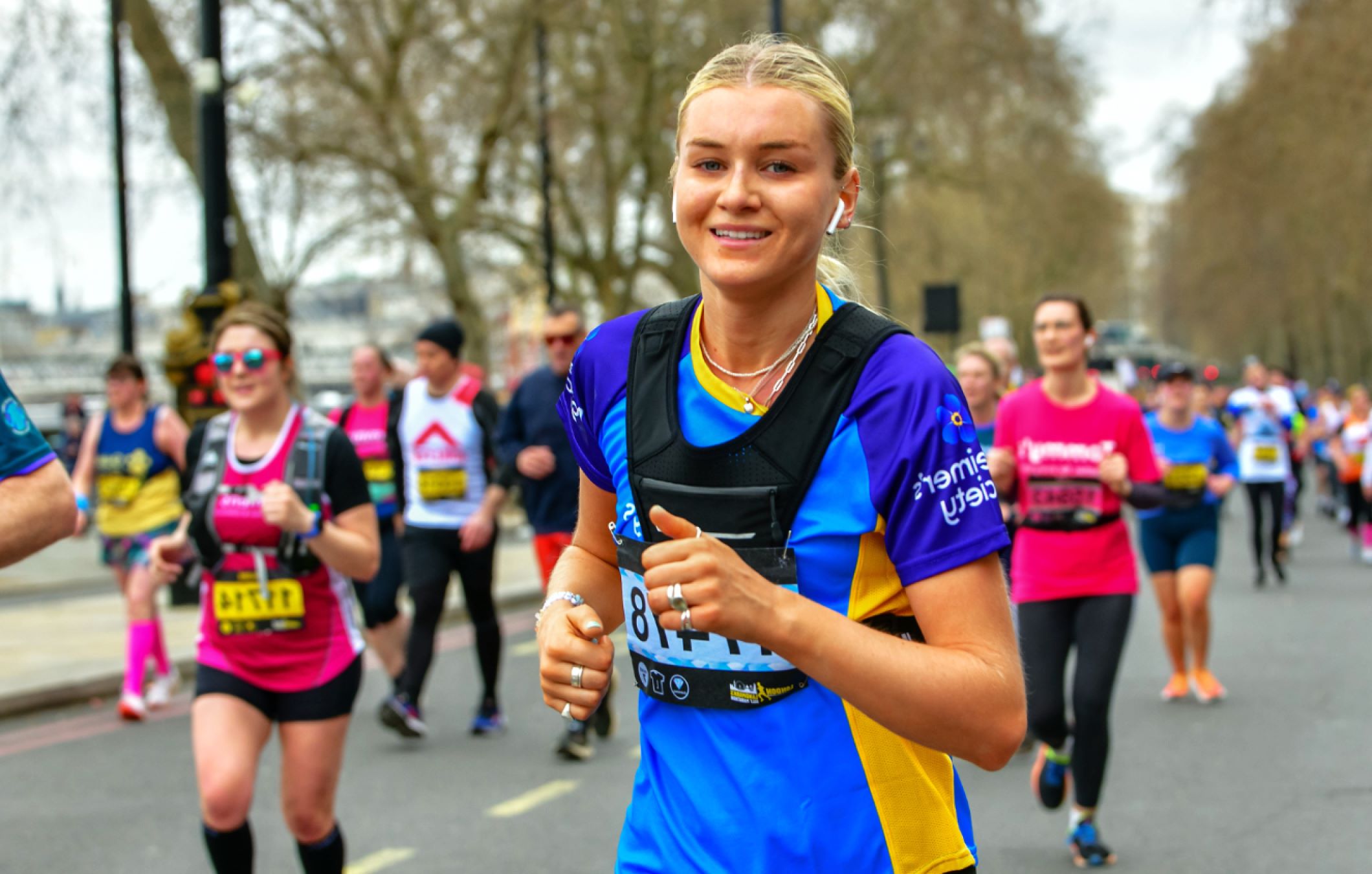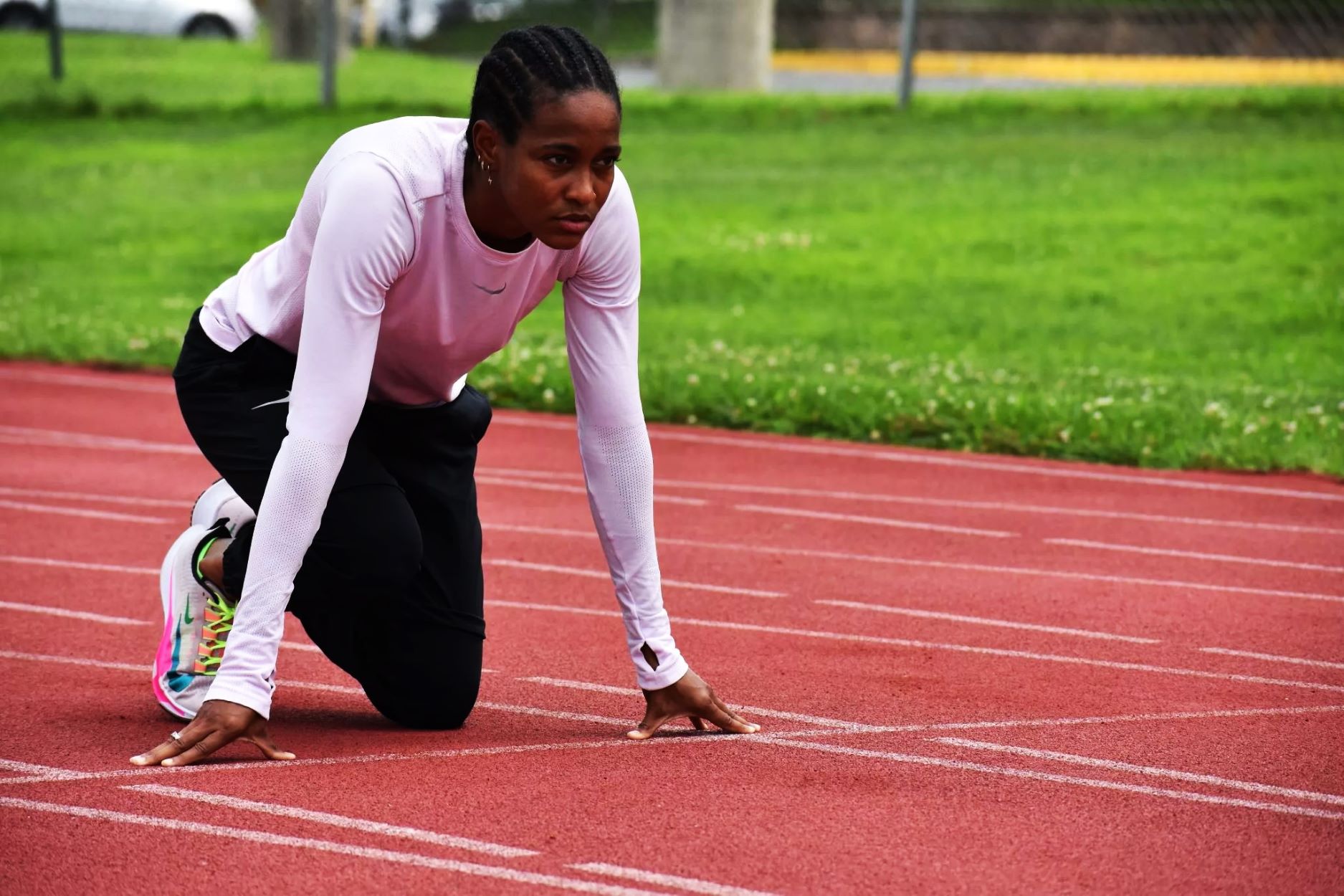Home>Training & Techniques>Get Ready To Sprint: A Speedy 5K Awaits


Training & Techniques
Get Ready To Sprint: A Speedy 5K Awaits
Published: March 2, 2024
Get ready to conquer your next 5K with our expert training and techniques. Sprint to the finish line with our proven strategies and tips. Start your journey to a faster race today!
(Many of the links in this article redirect to a specific reviewed product. Your purchase of these products through affiliate links helps to generate commission for Therunningadvisor.com, at no extra cost. Learn more)
Table of Contents
Preparing for a Fast 5K
Preparing for a fast 5K race involves a combination of physical, mental, and logistical readiness. Whether you're a seasoned runner or a novice, proper preparation is key to achieving your best performance. Here's how to get ready to sprint your way to success:
-
Set Clear Goals: Begin by setting specific and achievable goals for the race. Whether it's aiming for a personal best time or simply completing the race without stopping, having a clear objective will help guide your training and mental preparation.
-
Assess Your Fitness Level: Evaluate your current fitness level to determine where you stand in terms of speed, endurance, and overall running ability. This self-assessment will provide valuable insights into areas that require improvement and will help tailor your training plan accordingly.
-
Create a Training Plan: Develop a structured training plan that includes a balance of speed work, endurance runs, and rest days. Incorporating interval training, tempo runs, and hill workouts can significantly improve your speed and overall race performance.
-
Focus on Speed and Endurance: To excel in a fast 5K, it's essential to focus on both speed and endurance. Incorporate shorter, faster runs to improve your speed, as well as longer runs to build endurance. Striking a balance between the two will enhance your overall race readiness.
-
Practice Race-Specific Workouts: Integrate race-specific workouts into your training regimen. This could involve running at your goal race pace for short intervals to familiarize your body with the speed and intensity required for the 5K distance.
-
Warm-Up and Cool Down: Prior to race day, establish a pre-race warm-up routine that includes dynamic stretches and a short jog to prepare your muscles for the intense effort ahead. Similarly, incorporate a post-race cool-down to aid in muscle recovery and reduce the risk of post-race soreness.
-
Visualize Success: Mental preparation is just as crucial as physical training. Visualize yourself crossing the finish line with strength and determination. Positive visualization can help alleviate pre-race jitters and instill confidence in your abilities.
By diligently preparing for a fast 5K through structured training, goal setting, and mental readiness, you can optimize your performance and make the most of race day. With the right preparation, you'll be well-equipped to tackle the 5K distance with speed and confidence.
Read more: Improve Your 5K Speed With This Workout
Choosing the Right Gear
Selecting the appropriate gear is a pivotal aspect of preparing for a fast 5K race. The right gear not only enhances comfort and performance but also contributes to injury prevention. Here's a comprehensive guide to choosing the right gear for your upcoming 5K:
Running Shoes
Investing in a quality pair of running shoes is paramount. Visit a specialty running store to undergo a gait analysis and receive professional guidance on selecting the ideal shoes for your foot type and running style. Look for lightweight yet supportive shoes with ample cushioning to minimize impact and maximize propulsion.
Moisture-Wicking Apparel
Opt for moisture-wicking clothing to keep sweat at bay and maintain a comfortable body temperature throughout the race. Choose lightweight, breathable fabrics that allow for unrestricted movement. Additionally, consider wearing compression gear to enhance circulation and reduce muscle fatigue.
Performance Socks
Often overlooked, the significance of performance socks cannot be overstated. Select moisture-wicking socks with cushioning in high-impact areas to prevent blisters and enhance overall comfort. Properly fitting socks can significantly contribute to a blister-free and enjoyable race experience.
Read more: Expert Tips For Running A Sub 20 5k
GPS Watch or Running App
Consider utilizing a GPS watch or a running app to track your pace, distance, and heart rate during training runs and on race day. This valuable data can help you gauge your performance, maintain a consistent pace, and make informed adjustments as needed.
Race Belt or Armband
Carrying essentials such as energy gels, keys, or a phone is made convenient with a race belt or armband. These accessories allow for hands-free running and ensure that your race-day essentials are easily accessible without hindering your performance.
Sunglasses and Hat
If the race is scheduled for a sunny day, don't overlook the importance of UV-protective sunglasses and a moisture-wicking hat or visor. These accessories shield your eyes and face from the sun, allowing you to maintain focus and stay comfortable throughout the race.
Safety Reflectors
For races held in low-light conditions, safety reflectors are essential for visibility and safety. Attach reflectors to your gear to ensure that you remain visible to other runners and race officials, reducing the risk of accidents or collisions.
By carefully selecting the right gear, you can optimize your comfort, performance, and safety during the fast 5K race. Prioritize gear that aligns with your specific needs and preferences, and consider conducting trial runs in your chosen gear to ensure that it enhances your overall race experience. With the right gear in place, you'll be well-equipped to tackle the 5K distance with confidence and ease.
Training for Speed
Training for speed is a fundamental component of preparing for a fast 5K race. By incorporating targeted workouts and specific training techniques, runners can enhance their speed, agility, and overall race performance. Here's a comprehensive guide to training for speed in preparation for a fast 5K:
Interval Training
Integrating interval training into your regimen is a proven method for improving speed and cardiovascular fitness. This involves alternating between periods of high-intensity running and active recovery. For example, sprinting for 30 seconds followed by a 1-minute recovery jog. This not only enhances anaerobic capacity but also increases overall running speed.
Fartlek Runs
Fartlek, a Swedish term for "speed play," involves varying your pace throughout a run. This unstructured form of speed training allows runners to adapt to changes in speed and terrain, closely mimicking the conditions of a 5K race. By incorporating bursts of speed into your regular runs, you can improve your body's ability to handle changes in pace and maintain a faster overall speed.
Hill Repeats
Incorporating hill repeats into your training plan can significantly boost leg strength and speed. Find a moderately steep hill and sprint to the top, then jog back down to recover. Repeat this process several times. Hill repeats not only enhance muscular strength but also improve running economy, enabling you to tackle inclines with greater ease and speed.
Tempo Runs
Tempo runs involve sustained efforts at a challenging, but manageable, pace. By running at a comfortably hard pace for an extended period, typically 20-40 minutes, you can improve your lactate threshold and running efficiency. This translates to better speed and endurance, both of which are crucial for a fast 5K race.
Strides
Strides, also known as accelerations, are short bursts of near-maximum effort running. After an easy run or during a warm-up, incorporate 6-8 strides of approximately 80-100 meters each. Strides help improve running mechanics, increase stride length, and enhance leg turnover, all of which contribute to improved speed and running economy.
Plyometric Exercises
Incorporating plyometric exercises such as box jumps, bounding, and skipping can enhance explosive power and running efficiency. These exercises improve muscle elasticity and power, leading to a more efficient stride and increased speed.
By integrating these training methods into your regimen, you can effectively enhance your speed and overall race readiness for a fast 5K. Consistency, proper recovery, and gradual progression are key to reaping the benefits of speed-focused training. With dedication and strategic training, you can maximize your speed potential and excel in your upcoming 5K race.
Nutrition and Hydration Tips
Proper nutrition and hydration play a pivotal role in optimizing performance and supporting overall well-being during training and on race day. Implementing effective nutrition and hydration strategies can significantly enhance your readiness for a fast 5K race. Here's a detailed exploration of essential tips to fuel and hydrate your body for optimal performance:
Read more: 5K Run: Boost Your Endurance And Fitness
Pre-Race Nutrition
In the days leading up to the race, focus on consuming a balanced diet rich in complex carbohydrates, lean proteins, and healthy fats. Incorporate whole grains, fruits, vegetables, and lean sources of protein to provide sustained energy and support muscle recovery. Avoid excessive consumption of high-fat or high-fiber foods, as they can lead to gastrointestinal discomfort during the race.
Hydration Preparation
Proper hydration begins well before race day. Aim to maintain optimal hydration levels in the days leading up to the race by consistently consuming an adequate amount of water. Monitor your urine color to gauge hydration status, aiming for pale yellow urine, indicating proper hydration.
Race-Day Breakfast
On the morning of the race, consume a light, easily digestible breakfast approximately 2-3 hours before the start time. Opt for familiar, easily digestible foods such as oatmeal, bananas, or toast with a modest amount of nut butter. This pre-race meal should provide a balance of carbohydrates for energy and a small amount of protein for sustained fuel.
Hydration Strategy
Prioritize hydration in the hours leading up to the race, aiming to consume approximately 16-20 ounces of water 2-3 hours before the start time. Additionally, consume an additional 8-10 ounces of water 10-20 minutes before the race begins to ensure optimal hydration levels.
During the Race
For a 5K race, consuming water during the event may not be necessary for all runners, especially those who have adequately hydrated beforehand. However, if the weather is particularly warm or if you anticipate needing hydration during the race, consider taking small sips of water at designated water stations to maintain hydration without causing discomfort.
Post-Race Recovery
Following the race, prioritize rehydration and replenishment. Consume a balanced post-race meal or snack containing a mix of carbohydrates and protein to support muscle recovery and replenish glycogen stores. Additionally, continue to hydrate with water or a sports drink to replace fluids lost during the race.
Electrolyte Considerations
In instances of prolonged or intense exertion, particularly in warm weather, electrolyte replenishment may be necessary. Consider incorporating electrolyte-rich sports drinks or gels during the race to maintain electrolyte balance and support optimal muscle function.
By integrating these nutrition and hydration tips into your race preparation, you can effectively fuel your body for optimal performance and support overall race readiness. Remember that individual nutrition and hydration needs may vary, so it's essential to experiment with different strategies during training to determine what works best for you. With a well-rounded approach to nutrition and hydration, you can enhance your race-day experience and maximize your performance in the fast 5K race.
Mental Preparation for Race Day
Mental preparation is a critical component of readying oneself for a fast 5K race. The ability to cultivate a positive and focused mindset can significantly impact performance and overall race-day experience. Here's an in-depth exploration of essential strategies for mental preparation to optimize readiness for the upcoming race:
Visualize Success
Engage in visualization exercises to mentally rehearse the race experience. Close your eyes and vividly imagine yourself navigating the course with strength and determination. Visualize the exhilaration of crossing the finish line, feeling the surge of accomplishment and pride. By repeatedly visualizing success, you can instill confidence and reduce pre-race jitters.
Positive Self-Talk
Harness the power of positive self-talk to cultivate a resilient and optimistic mindset. Replace self-doubt and negative thoughts with affirmations of strength and capability. Remind yourself of past achievements and affirm your readiness for the upcoming challenge. By fostering a positive internal dialogue, you can bolster confidence and fortitude.
Embrace Pre-Race Nervousness
Acknowledge and embrace pre-race nervousness as a natural aspect of the racing experience. Rather than attempting to suppress or eliminate nervous feelings, reframe them as a source of energy and readiness. Channel pre-race jitters into focused determination, using the heightened adrenaline to your advantage.
Establish a Race-Day Mantra
Develop a personal mantra or phrase that encapsulates your race-day mindset. Whether it's a motivational quote, a personal affirmation, or a simple yet powerful word, having a mantra can serve as a grounding force during moments of fatigue or doubt. Repeat your chosen mantra silently or aloud to reinforce mental resilience and determination.
Focus on Process Goals
Shift your focus from outcome-based goals to process-oriented objectives. Instead of fixating solely on finishing time or placement, concentrate on executing your race strategy, maintaining a steady pace, and conquering each mile with determination. By emphasizing process goals, you can stay present and engaged throughout the race.
Embrace Race-Day Excitement
Embrace the excitement and energy of race day as a source of motivation and inspiration. Surround yourself with the camaraderie of fellow runners, absorb the electrifying atmosphere, and draw strength from the collective determination of the participants. Allow the buzz of race day to fuel your own enthusiasm and resolve.
By integrating these mental preparation strategies into your race-day readiness, you can cultivate a resilient and focused mindset that enhances your overall performance. Remember that mental preparation is a continual practice, and by consistently honing your mental resilience, you can optimize your race-day experience and achieve your best performance in the fast 5K race.









